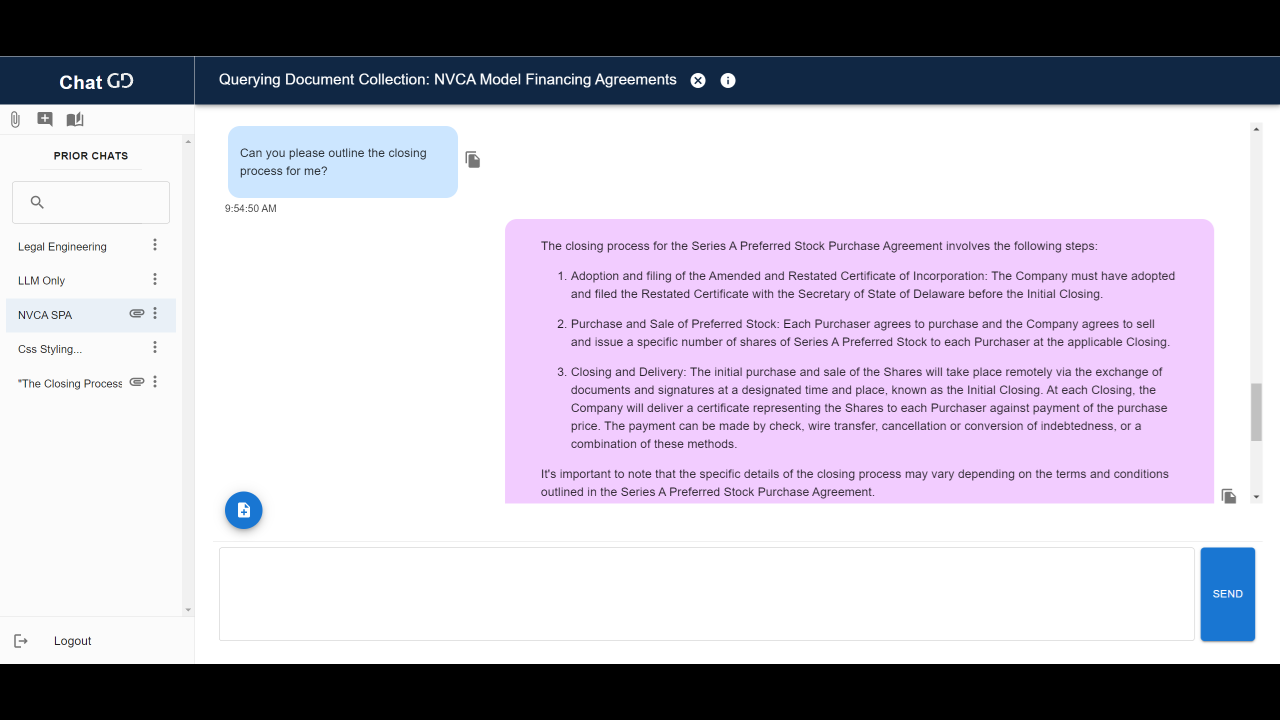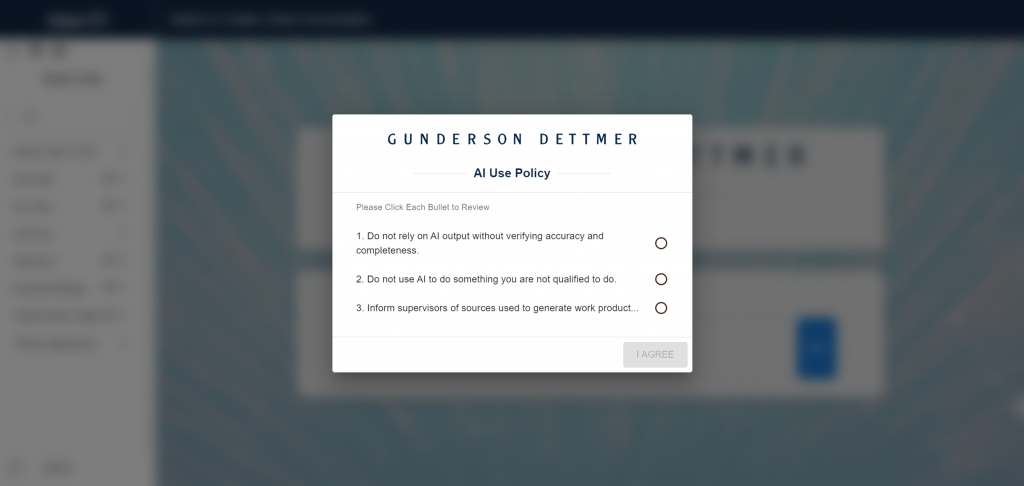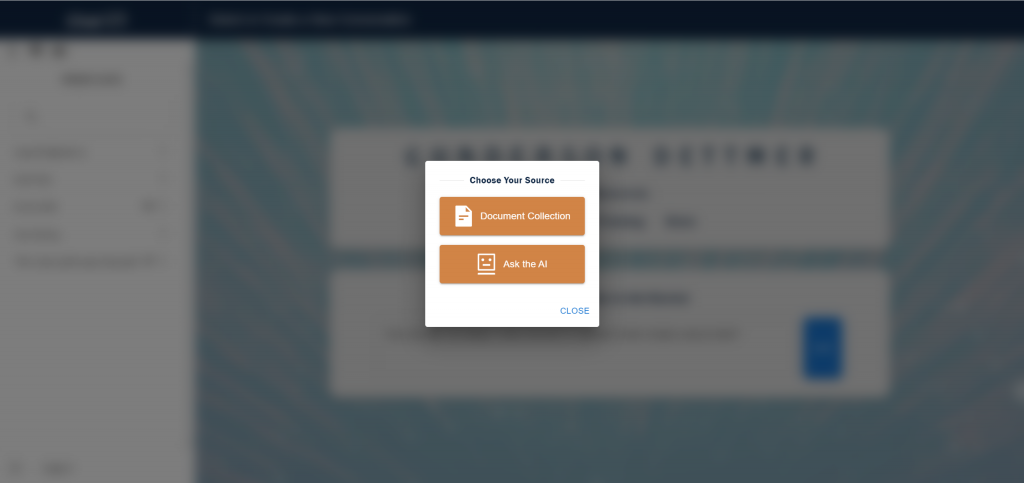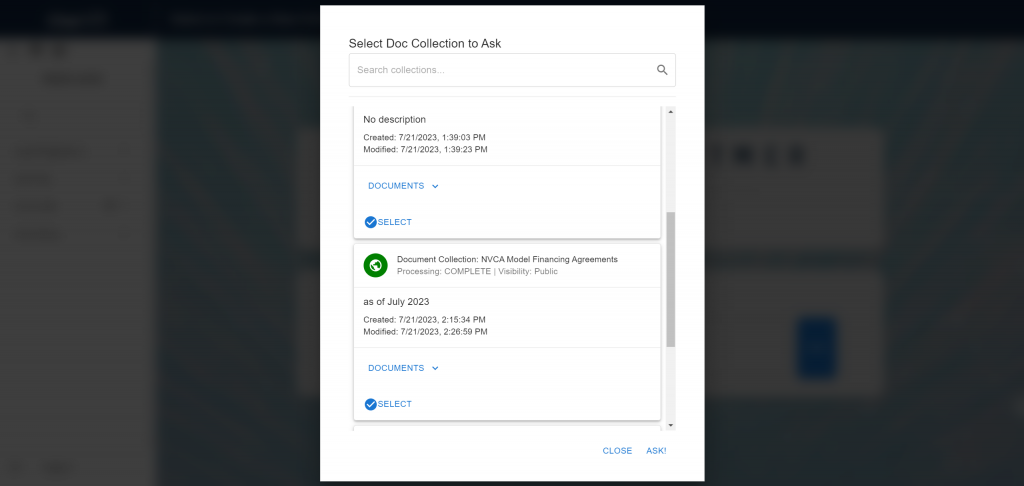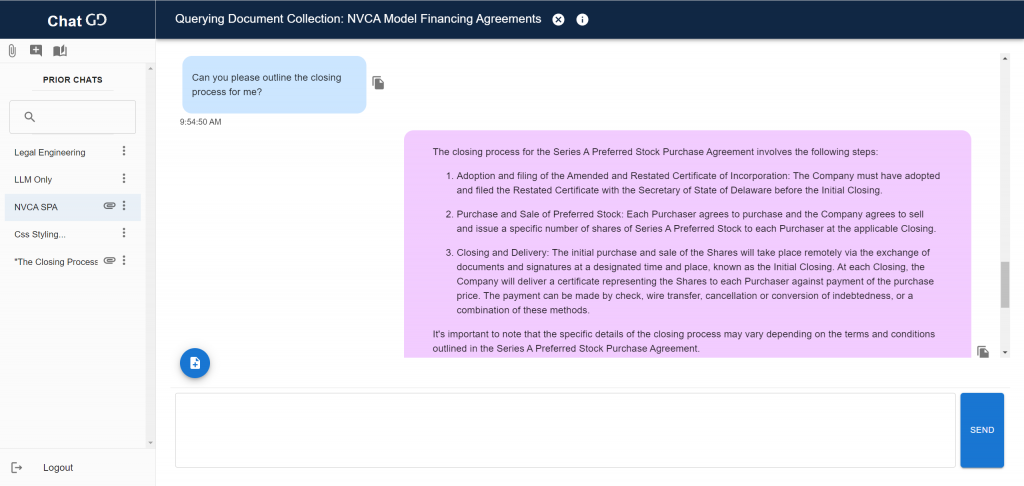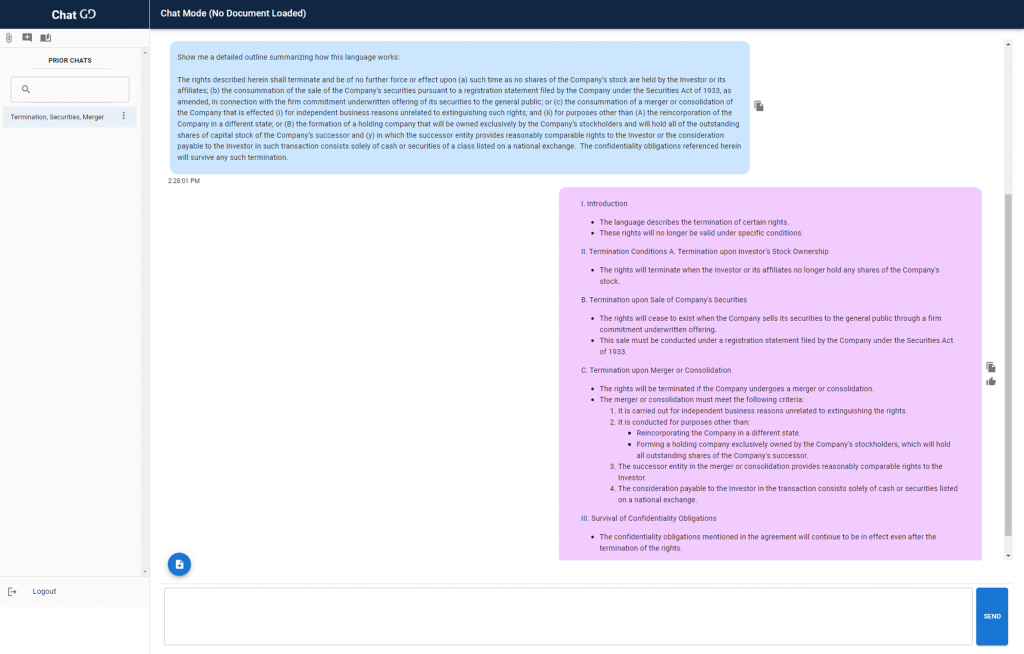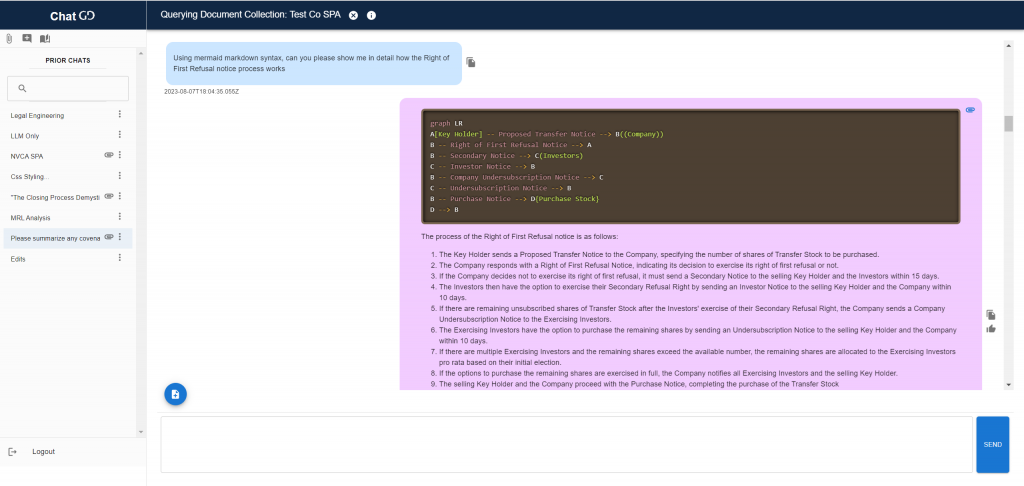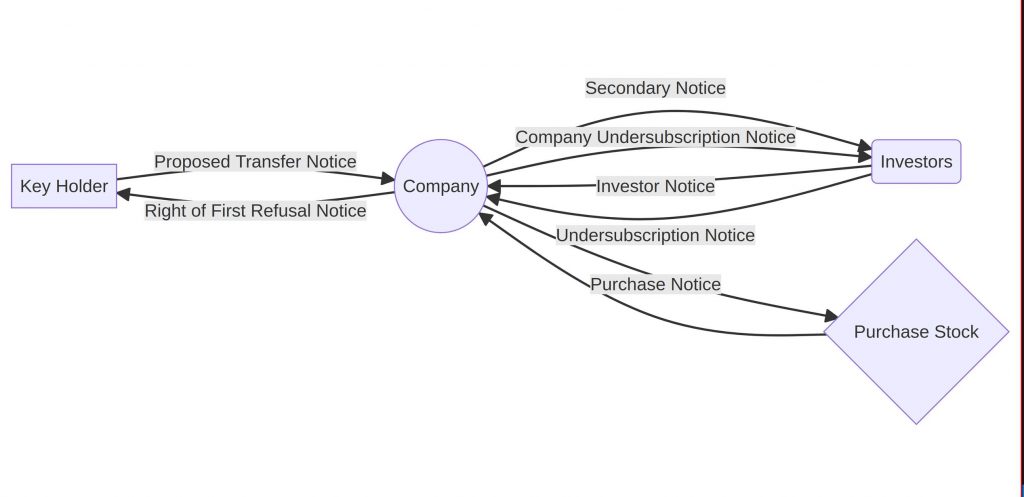Silicon Valley-based Gunderson Dettmer, an international law firm of more than 400 lawyers that represents many clients in the field of artificial intelligence, today launched an artificial intelligence application of its own making — an internal generative AI chat app called ChatGD.
The launch appears to make Gunderson Dettmer the first U.S.-based firm to develop a proprietary internal tool using generative AI technology and possibly also the first firm anywhere to launch such a tool.
Last week, global law firm Dentons announced that it planned to launch a proprietary version of ChatGPT. However, the announcement did not specify a launch date, saying only that it “is to launch in August 2023.”
Homegrown, Model Agnostic
For Gunderson, the firm is no stranger to AI. Not only does it represent clients in the field, it has also itself deployed third-party AI tools for years — including some powered by large language models (LLMs). But ChatGD is its first “homegrown” internal AI tool – a development the firm calls a milestone in its ability to marry its in-house legal expertise with cutting-edge engineering and technology.
“A full year before ChatGPT came out, we were using large language models and tools that incorporated large language models to extract data from documents and process data,” Joe Green, the firm’s chief innovation officer, told me during a demonstration of ChatGD last Friday. “So we have been familiar with the power of the technology for some time.”
“Since then, given our position as a firm that focuses exclusively on working with the most innovative companies and investors in the world, we thought it would be really worthwhile for us to get our hands dirty and actually get into the technology, see what we can do with it.”
That would help the firm better advise its clients about how to incorporate the technology for themselves, he said. “And since we think it’s going to be a really transformative technology for the industry as it develops, we get some good experience under the hood.”
Already in use by some of the firm’s attorneys and being rolled out more widely throughout the firm starting today, ChatGD allows attorneys to query and manipulate documents using a secure, enterprise instance of OpenAI’s models through Microsoft Azure. By accessing the models through Azure, the firm is assured there will be no leakages or misuse of confidential data.
But even though it is launching using Azure, the framework is “model agnostic,” meaning it can work with other LLMs such as Anthropic, Google Palm and Meta’s Llama 2 (which can be self-hosted).
“We think it’s very important not to get tied to a single vendor or AI model at the moment,” said John Scrudato, Gunderson’s legal engineering and data strategy manager, who was also part of Friday’s demonstration. “New models from Google, Meta and others are coming out with increasing frequency and capabilities.
“Building around Azure OpenAI models is not future-proof, and we built ChatGD on widely supported, open source software that provides a model agnostic backend. We can effortlessly change out our models and experiment with new document retrieval mechanisms.”
Two Main Components
As it is launching today, the application has two main components. One is a general chat mode, similar to ChatGPT, where attorneys can directly have conversations with the LLM.
The other — and, according to Green, “more exciting” — component is the ability of lawyers to query documents they provide using retrieval-augmented generation (RAG), a method of using relevant data from outside the LLM to augment queries.
Lawyers can upload documents or collections of documents and then query the LLM and receive responses based on the context provided by the documents. Not only does this allow lawyers to query the LLM based on their own internal knowledge, but it also reduces hallucinations and increases accuracy, Green said.
“We can curate and target document collections for specific users and use-cases,” said Scrudato. “This will allow us to leverage our existing knowledge base and data to let users have targeted chats powered by curated information on specific topics.”
As an example of how this component could be used, a lawyer could add a model financing agreement to the chat and then ask, “Show me a new version of the indemnification clause that allocates more risk to the investor.”
Similarly, lawyers could upload documents they or the firm have already created for specific tasks, such as responding to vendors, and then create new versions to respond to new requests. “It can do a lot of the rote work that goes into that without having to actually do all that copying, pasting and cutting yourself,” Scrudato said.
Not A Replacement for Humans
Green emphasized that the firm does not view this technology as a replacement for knowledgeable professionals with subject matter expertise and human judgment. “It’s maybe a huge accelerant and a great aid to a lot of the work that they do, but the people are ultimately responsible for the end results — and that’s something we really harp on.”
In fact, each time lawyers in the firm log in to the app — which they can do directly through the firm’s VPN using their standard login credentials — they are required to acknowledge the firm’s AI use policy, including that they will not rely on AI output without verifying its accuracy and completeness, and that they will not use AI to do something they are not qualified to do.
Users are then asked to choose between directly querying the AI model or selecting a document source. If they select document source, then they are prompted to select a document collection.
In the example below, the user is using the RAG function to query a collection of financing agreements and asks the ChatGD to outline the closing process.
“When you use ChatGPT in the context of providing legal services, it is impossible to know where the information is coming from, it is just being generated by the model,” Green said. “But when you use retrieval augmented generation to kind of chat with a document, we have it set up so that it has to show you where it found the information, so you know what document it came from and the snippet of text that it used.”
Scrudato also demonstrated some of the advanced capabilities of the technology. In this example, using chat mode only with no document loaded, he asks the model to create an outline showing how specific contract language works.
Next, querying a document collection, he asks it to use Mermaid Markdown syntax (used for creating diagrams from text) to create outlines and graphic diagrams based on language in the documents.
From that, the app can dynamically generate a diagram.
Although this diagramming capability is not yet directly incorporated in the app, Scrudato plans to add it.
Building Muscles
Even as the firm is launching ChatGD today, Green and Scrudato are looking ahead to how they will continue to develop it. One immediate goal is to connect the app to the firm’s various internal knowledge repositories, including both knowledge management and institutional knowledge.
“Instead of just chatting with particular documents that an individual uploads or the document collections that we’ve created, we can start bringing in all of the firm’s different knowledge repositories,” Green said.
They are also considering ways to connect the app to the firm’s full document management system, but Scrudato believes Gunderson’s current approach of using curated document collections will deliver superior results.
“The text-retrieval systems that typically feed document question answering AIs are generally limited to retrieving a few hundred to a few thousand words and, the larger the document collection, the harder it is to get the right text distilled to that length limit for your AI,” Scrudato said. “It’s very important that the text identified as responsive to a query actually be responsive, high-quality information. ChatGD is built with this in mind.”
Underlying all of this, said Green, is Gunderson Dettmer’s goal of helping its attorneys get comfortable with using AI and learning how to get the most out of it.
“The main use case for this is to learn how to be great at getting the most out of generative AI technology. There’s a significant learning curve, and anybody who’s played around with ChatGPT knows that if you ask a question in a certain way and then you ask it again in another way, you can get wildly different results and wildly differing quality.
“That’s going to be such an important skill for all knowledge professionals, lawyers in particular, to be able to really understand the limitations of the technology, what it’s good at doing, and how to get the most out of it. And that’s really the thing that we’re most excited to be embarking on by launching ChatGD — to allow our attorneys to be able to use this in their workflows, in real work situations, to really start building those muscles.”
 Robert Ambrogi Blog
Robert Ambrogi Blog